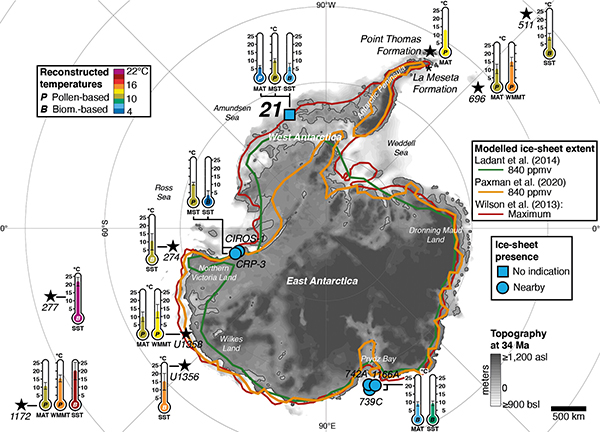Research Highlight - New Drill Core Evidence Challenges Understanding of Early Antarctic Ice Sheets
A recent study published in Science on July 4, 2024, by J. P. Klages and the research team, offers unprecedented insights into the Early Oligocene Glacial Maximum (EOGM) Antarctic ice sheets. Drilling at Site PS104_21 in the Amundsen Sea Embayment has revealed that parts of West Antarctica were ice-free and below sea level, suggesting the presence of open trans-Antarctic seaways. The findings contradict previous models predicting a fully-formed West Antarctic Ice Sheet (WAIS) during the EOGM.
The research utilized advanced drilling technology to extract and analyze semi-lithified strata, indicating a marine environment devoid of glacial influence. The study's multi-proxy evidence supports a scenario with limited ice coverage and implies that a significant WAIS developed much later than East Antarctica's ice sheet.

Fig. Circum-Antarctic paleo-environmental data evidence and previous modeling scenarios for earliest Oligocene Antarctic ice sheet-extent (from reference)
Climate simulations using the AWI-ESM-2.1-LR and PISM models, aligned with the paleo-data, indicate the absence of ice sheets in West Antarctica during the late Eocene, under atmospheric CO2 concentrations of ~850 ppmv.
The findings have significant implications for climate science, offering a revised timeline for the development of the Antarctic ice sheets and a better understanding of the Earth's climate history. The study emphasizes the importance of continued research in paleoclimatology to improve models predicting the impact of climate change.
——
Reference
J. P. Klages et al., Ice sheet–free West Antarctica during peak early Oligocene glaciation. Science, eadj3931 DOI:10.1126/science.adj3931